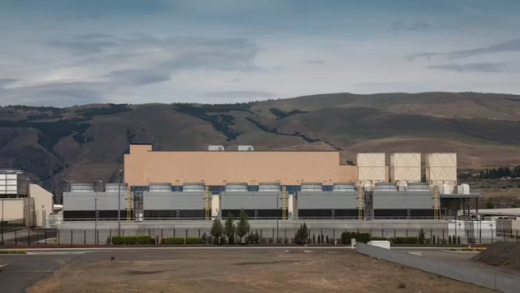When the Indy Autonomous Challenge takes off later this year, all the race cars will look the same — and no one will be behind the wheel.
The IAC is a university-led self-driving car race taking place Oct. 23 at the Indianapolis Motor Speedway with $1.3 million in prizes on offer. The first three teams to cross the finish line in 25 minutes or less after 20 laps (that’s about 50 miles) will win what’s believed to be the first head-to-head autonomous race.
To make sure the race is about building out the software for autonomous driving at high speeds (the average speed will be about 120mph), each team has the exact same modified Dallara AV-21, a typical race car usually with a human driver. Clemson University students helped develop the base car for the race.
Earlier this month, the IAC showed off more details about the cars equipped with radar, cameras, ultrasonic, and infrared sensors along with three light-detecting sensors, called LiDAR, from autonomous sensor maker Luminar. LiDAR helps cars “see” by emitting light onto objects as far as 800 feet around the car.

Credit: Indy Autonomous Challenge
The sensors in the car are the same that Luminar, a Florida-based company, is going to put in future Volvo SUVs. Race organizers want the cars able to handle the extreme racing environment, but also be applicable to future self-driving car scenarios on city roads and highways.
Luminar’s senior director of product strategy, Dr. Matthew Weed, who studies optics and lasers, said the race is less about the hardware and more about the challenge of making decisions while moving at breakneck speeds. It’s an opportunity to make autonomous highway driving safer, too.
What the students learn on the course will “trickle down from the racing environment to commercial vehicles,” he said in a recent call.
When driving really fast, the car’s sensors and computer system has to anticipate what will happen next. It doesn’t happen right in front of the car, as with many of the test autonomous vehicles from companies like Cruise and Waymo that travel at modest freeway speeds at most.
“You’re going to have a fair shot at 65mph when something unexpected happens,” said Matt Peak, the director of mobility at Energy Systems Network, which is one of the main organizers behind the Indy Autonomous Challenge. That’s not the case at 180mph in autonomous mode.
The race is based on the 2004 DARPA Grand Challenge for autonomous vehicle development, but this time with university teams. The U.S. Department of Defense led the original challenge that brought competitors from major automakers.
For the IAC, more than 40 schools with 550 students from around the world entered the competition. As of late July, it’s down to 19 universities across 10 final teams comprised of more than 200 students.
Students from as far as Poland, Germany, Italy, and Korea are taking on teams from U.S. universities like Rochester Institute of Technology, Colorado State, Western Michigan, Massachusetts Institute of Technology, University of Pittsburgh, University of Alabama, University of Virginia, West Point, Auburn, and University of Hawai’i. Some schools are joining forces with others, like Indiana University with the Indian Institute of Technology Kharagpur and Colombia’s Universidad de San Buenaventura.
“It’s a good opportunity for our tech to be in the hands of the next generation,” Luminar’s Dr. Weed said.
New robo-taxi is sleek and slim compared to other ‘monstrosities’
To make it to the final race, the university teams have been working on programming the cars since before the pandemic. All without stepping onto the race track.
Starting next month the final teams will finally get to interact with the race vehicle in preparation for a qualifying race on Oct. 21 and 22. Earlier this year the teams competed in a simulated race completely virtually.
Now an IRL race day is fast approaching. In October finalists will put the pedal to the metal with their programming skills for the robo-race.
Source : These cars go 180 miles per hour — and will race without drivers









